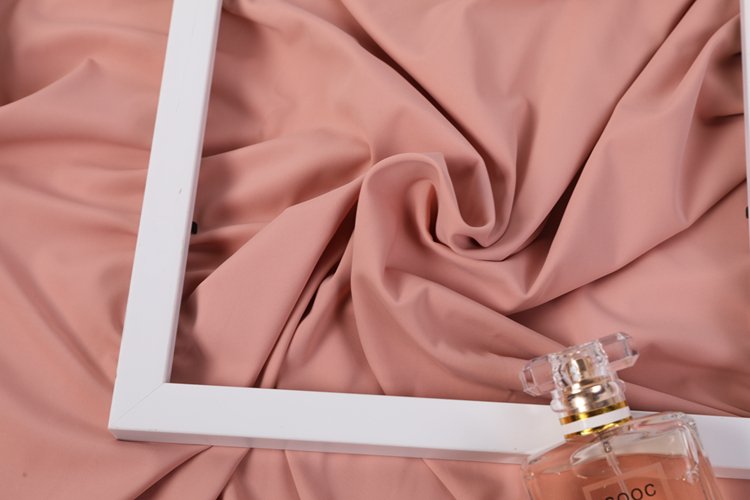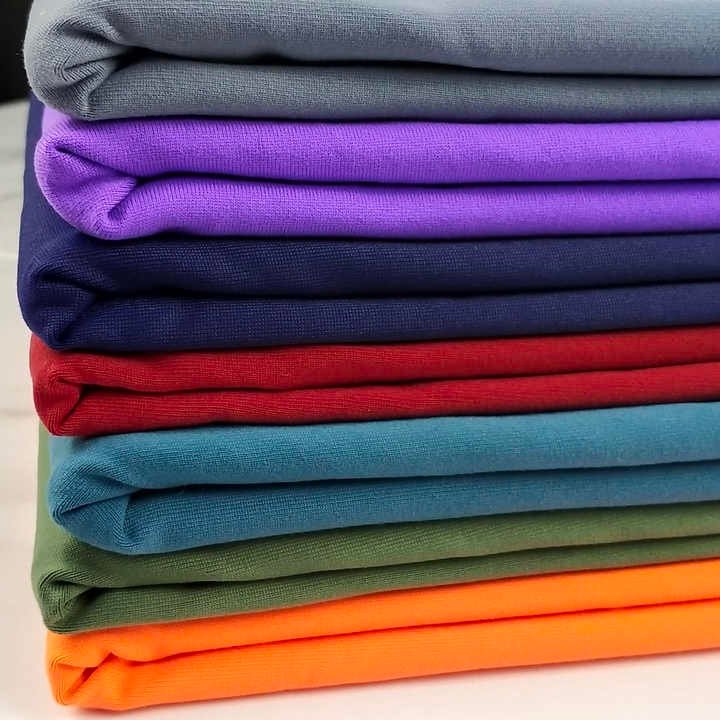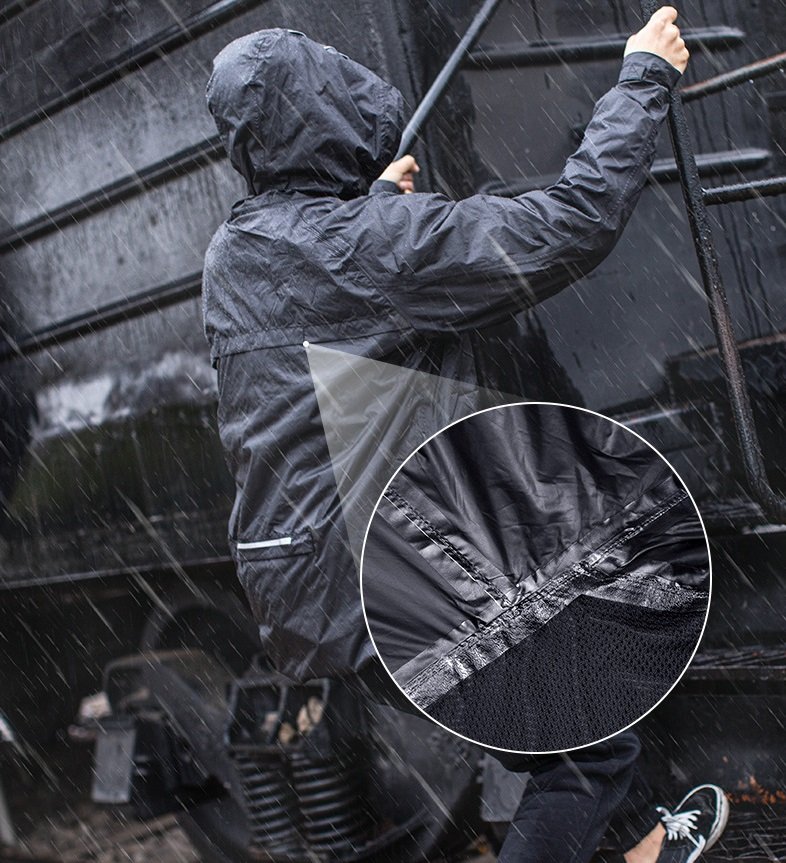
Nylon’s ascent from humble parachute cords in World War II to the cornerstone of today’s performance apparel is a testament to human ingenuity in textiles. Once celebrated merely for its durability, nylon now orchestrates the balance between comfort, sustainability, and cutting-edge performance. Nylon combines exceptional tensile strength, superb elasticity, and outstanding abrasion resistance, making it ideal for dynamic movement. With advanced manufacturing (like recycled and bio-based nylons), moisture-wicking finishes, and odor-control treatments, it outperforms traditional fibers in breathability, quick-drying, and long-term wear. Brands leverage these properties to craft gear that feels light, fits snugly, and endures rigorous use—delighting athletes and eco-conscious consumers alike. To illustrate, imagine a runner powering through a morning drizzle—his nylon-blend jacket beads off water while stretching effortlessly. Now, buckle up for an exploration that uncovers the tech, the trade-offs, and the future innovations behind nylon’s dominance.
What Makes Nylon Fabric Ideal for High-Performance Activewear?
Nylon’s claim to activewear fame rests on three pillars: strength, elastic recovery, and abrasion resistance. These properties ensure garments maintain shape under repetitive stretching, resist tears from rough surfaces, and support vigorous activities—from rock climbing harnesses to marathon-ready leggings. Nylon’s unique polymer structure grants it high tensile strength for load-bearing garments, superior elasticity for shape retention, and excellent abrasion resistance to withstand friction. Together, these attributes enable activewear to remain durable, flexible, and long-lasting—even under extreme conditions or frequent wash cycles—making nylon the go-to choice for performance gear.
Mechanical Properties in Focus
Tensile Strength & Break Elongation
- Tensile strength measures the maximum stress nylon fibers can endure before breaking. Typical values: 800–1200 MPa for Nylon 6,6 vs. 600–900 MPa for polyester.
- Break elongation indicates stretchability; nylon achieves 30–50% elongation before failure, compared to 15–30% for polyester.
Elastic Recovery & Shape Retention
- Elastic recovery refers to the fiber’s ability to return to original dimensions after stretch. Nylon retains >90% shape at 10% stretch over 100 cycles.
Abrasion Resistance
- Tested via Martindale cycles: Nylon fabrics often exceed 50,000 rubs before noticeable wear, outperforming cotton (10,000 cycles) and many blends.
| Property | Nylon 6,6 | Nylon 6 | Polyester | Cotton |
|---|---|---|---|---|
| Tensile Strength (MPa) | 800–1200 | 600–900 | 500–800 | 200–400 |
| Break Elongation (%) | 30–50 | 25–45 | 15–30 | 10–20 |
| Elastic Recovery (%) | >90 | \~85 | \~80 | <70 |
| Martindale Abrasion (cycles) | >50,000 | 40,000–50,000 | 30,000–45,000 | 8,000–12,000 |
While nylon excels in these tests, does real-world performance always mirror lab data? Factors like knit structure, yarn twist, and finish chemistry significantly influence outcomes— designers to consider end-use before fiber selection.
How Does Nylon Compare to Other Technical Fabrics Like Polyester and Spandex?

Activewear isn’t a single-fiber world. Polyester and spandex both vie for market share—each with unique strengths. Polyester is cost-effective and UV-stable; spandex delivers unrivaled stretch. But nylon often hits the sweet spot between cost, performance, and comfort. Compared to polyester, nylon offers greater elasticity and softness, though at a slightly higher cost. Versus spandex, nylon is less stretchy but far more durable and abrasion-resistant. In blends, nylon typically contributes durability and moisture management, while polyester adds colorfastness, and spandex provides stretch—creating garments tuned for specific performance profiles.
Trade-Offs & Blend Strategies
Cost vs. Performance Fiber Approx. Yard Cost (USD) Key Benefit Nylon 2.50–4.00 Elastic recovery Polyester 1.50–2.50 Colorfastness, UV resistance Spandex 4.00–6.00 Maximum stretch
Comfort & Hand Feel
- Nylon feels silkier and cooler next to skin; polyester can feel slightly rougher without finishing.
Moisture & Breathability
- Nylon wicks moisture effectively; polyester dries faster but can trap odors.
Durability & Pilling
- Nylon resists pilling better than polyester, translating into longer-lasting aesthetics.
Blend Examples
- 80 % nylon/20 % spandex for compression tights.
- 60 % polyester/40 % nylon for wind-resistant jackets.
Blending can mask each fiber’s weaknesses but may introduce recycling challenges. Brands must weigh end-of-life strategies when selecting blends.
Which Nylon Fiber Technologies Are Driving Innovation in Sportswear?

Not all nylons are created equal. From Nylon 6,6 renowned for heat resistance to bio-based nylons crafted from castor oil, innovations cater to both performance and sustainability demands. Key nylon variants include Nylon 6 (fast‐drying, cost-effective), Nylon 6,6 (higher melting point for hot-wash durability), recycled nylon (reduces virgin polymer use by up to 90 %), and bio-based nylons (partial reliance on renewable feedstocks). Each type presents trade-offs between performance metrics, environmental impact, and cost—fueling brands’ strategic material decisions.
Variant Breakdown & Market Share
Nylon 6 vs. Nylon 6,6
- Nylon 6,6: Melting point \~265 °C, superior wash-and-wear stability.
- Nylon 6: Melting point \~220 °C, slightly more hydrophilic for moisture absorbency.
Recycled Nylon (e.g., ECONYL®)
- Diverts 10 000 tonnes of fishing nets/year from oceans.
- 90 % energy savings vs. virgin nylon production.
Bio-Based Nylon (e.g., PA 11)
- Derived from castor oil; up to 70 % renewable carbon content.
- Slightly higher cost (10–15 % premium).
High-Tenacity & Microfiber Nylons
- High-tenacity: >1200 MPa strength for reinforcement uses (e.g., shoelaces).
- Microfiber: Denier <1.0 for ultralight, soft finishes in workout tops.
| Variant | Melting Point (°C) | Renewable Content (%) | Energy Savings vs. Virgin (%) | Avg. Cost Premium |
|---|---|---|---|---|
| Nylon 6 | 220 | 0 | – | Baseline |
| Nylon 6,6 | 265 | 0 | – | +5 % |
| Recycled Nylon | \~250 | 0 | 90 % | +8 % |
| Bio-Based Nylon | 210–230 | 30–70 | 50 % | +15 % |
| High-Tenacity | 260 | 0 | – | +10 % |
| Microfiber | 220 | 0 | – | +7 % |
While recycled and bio-based nylons reduce environmental footprint, supply chain scale and consistent quality remain hurdles for many brands.
Why Are Brands Choosing Nylon for Moisture-Wicking and Quick-Drying Apparel?

Activewear’s promise hinges on staying dry and comfortable. Nylon’s hygroscopic nature, combined with advanced finishes, enables garments to pull sweat away from the skin and disperse it across the fabric surface. Nylon fibers absorb up to 4 % of their weight in moisture and release it quickly when combined with wicking finishes. Engineered cross-section shapes and capillary-action yarn structures drive moisture transport, while durable water-repellent (DWR) coatings expedite drying. The result: fabrics that keep athletes dry, reduce chafing, and maintain thermal comfort during high-intensity workouts.
Wicking Mechanisms & Finish Technologies
Fiber Geometry & Capillarity
- Trilobal or circular cross-sections increase surface area for capillary action.
Textile Constructions
- Knits with open loops vs. closed weaves: loops trap moisture, weaves shed it faster.
Chemical Finishes
- Hydrophilic treatments: Silane-based finishes that bond moisture to fiber surface.
- DWR coatings: Fluorine-free alternatives (e.g., C0, fluorine-free durable finishes).
Performance Metrics Test Nylon (with finish) Polyester (with finish) Wicking Rate (cm/s) 0.5–0.8 0.4–0.6 Dry-Time (g/g/min) 0.15–0.25 0.10–0.20 Moisture Regain (%) 4.0 0.4
DWR finishes can degrade over time—raising care-label considerations and after-care treatments to maintain wicking efficacy.
How Is Nylon Fabric Manufactured and Finished for Activewear Applications?

The journey from petrochemical to performance gear involves multiple steps: polymerization, spinning, texturizing, fabric formation, and finishing. Nylon production begins with polymerization of adipic acid and hexamethylenediamine, creating long-chain polyamides. Melt spinning extrudes the polymer through spinnerets into continuous filaments, which are drawn and heat-set to align molecules for strength. Texturizing imparts bulk and stretch. Knitting or weaving forms fabric, followed by mechanical (e.g., calendaring) and chemical (e.g., dyeing, finishing) processes to add performance attributes like wicking, anti-odor, and UV protection.
Step-by-Step Process & Quality Controls
Polymerization & Pelletizing
- Reaction vessel conditions (280 °C, 0.5 MPa) monitored for molecular weight targets (\~30,000 g/mol).
Melt Spinning & Drawing
- Spinneret holes: 100–200 μm diameter.
- Draw ratio: 3–5x to achieve desired tenacity.
Texturizing Techniques
- False-twist texturing vs. BCF (bulk continuous filament).
Fabric Formation
- Circular knitting machines (diameter: 30–40 in.) for seamless tubular activewear.
- High-speed rapier looms for lightweight woven jackets.
Finishing Treatments
- Dyeing: Dope (solution) vs. piece (yarn/fabric) dyeing.
- Functional finishes: antimicrobial silver ions, UV-protective TiO₂ sprays.
Quality Assurance
- FTIR spectroscopy to confirm polymer composition.
- Tensile testers and martindale abrasion machines for performance verification.
Manufacturing complexity contributes to cost and carbon footprint—pushing brands toward supply-chain transparency and localized production strategies.
Do Sustainable and Recycled Nylon Options Meet Performance Requirements?
Eco-nylons promise reduced impact, but do they stand up in the gym—or on the trail? Recycled nylon (e.g., ECONYL®) and bio-based variants deliver 80–90 % of the performance metrics of virgin nylon in tensile strength and abrasion resistance, while reducing embodied CO₂ by up to 70 %. Advanced recycling and polymer-refining techniques ensure fiber consistency, making eco-nylons viable for premium activewear with minimal trade-offs in durability or hand feel.
Sustainability Metrics & Performance Data
Carbon & Water Footprint Material CO₂ Emissions (kg/kg) Water Use (L/kg) Virgin Nylon 9.5 210 Recycled Nylon 2.0 60 Bio-Based Nylon 5.0 130
Mechanical Comparison Property Virgin Nylon Recycled Nylon Bio-Based Nylon Tensile Strength 800 MPa 700–780 MPa 650–750 MPa Abrasion Resistance >50,000 45,000–50,000 40,000–47,000
Consumer Perceptions
- Surveys show 68 % of active consumers are willing to pay a 10 % premium for recycled fabrics.
Challenges & Innovations
- Color consistency across recycled batches.
- Scaling bio-monomer production for PA 11.
True circularity demands take-back programs and chemical recycling investments—areas where industry consensus is still evolving.
Are There Any Limitations or Common Misconceptions About Nylon in Sportswear?

Despite rave reviews, nylon has its caveats: heat sensitivity, potential odor retention, and environmental misperceptions. Nylon can degrade above 230 °C, so high-heat care cycles risk fiber damage. It’s inherently hydrophilic, leading to odor‐binding if finishes wear off. Misconceptions label all nylon as non-sustainable—overlooking recycled and bio-based innovations. Proper garment care (cold wash, low-heat drying) and finish maintenance preserve nylon’s performance and longevity.
Caveats, Care & Consumer Education
Thermal Limits & Care Guidelines
- Max wash temp: 40 °C; tumble-dry low (<60 °C).
Odor Management
- Nylon holds body oils; antimicrobial finishes crucial for odor control.
Environmental Myths
- Not all nylons are petro-heavy—distinguish virgin vs. recycled vs. bio-based.
Label Literacy
- Educate consumers on care symbols and lifecycle to extend garment life.
Regulatory & Health Considerations
- Oeko-Tex Standard 100 for finish safety.
- Monitoring phthalate and formaldehyde residues in chemical treatments.
Overeducation risks confusing buyers—brands must distill care and sustainability messaging into simple, actionable steps.
What Future Trends Will Shape Nylon’s Role in the Activewear Market?
From smart fabrics to circular-economy systems, nylon’s story is far from over. Emerging trends include embedded sensors in nylon knits for biometric feedback, nano-coatings that adjust breathability on demand, and closed-loop recycling programs enabling true garment-to-garment regeneration. These innovations aim to elevate performance while tackling environmental impact—positioning nylon at the nexus of technology and sustainability.
Tomorrow’s Nylon Innovations
Smart Textiles & e-Textiles
- Conductive nylon yarns woven with sensors for ECG, temperature monitoring.
Adaptive Finishes
- Phase-change microcapsules that absorb or release heat in response to body temperature.
Circular-Economy Initiatives
- Brand take-back schemes; partnerships with chemical recycling firms.
Digital Material Passports
- Blockchain tracking of nylon’s lifecycle—from raw monomer to end-of-life.
Customization & On-Demand Manufacturing
- 3D-knit nylon garments produced per order to minimize waste and inventory.
Adoption hinges on cost reduction and consumer understanding—innovators must balance hype with practical, scalable solutions.
Nylon’s dominance in activewear is no fluke: it’s engineered excellence married with ongoing innovation. From its mechanical prowess to sustainable breakthroughs, nylon empowers brands and athletes alike. Ready to explore custom nylon solutions for your activewear line? Reach out to Szoneier Fabrics today to discuss bespoke fabric R\&D, rapid sampling, and low-MOQ production—100 % quality guaranteed, free design assistance, and swift delivery.

